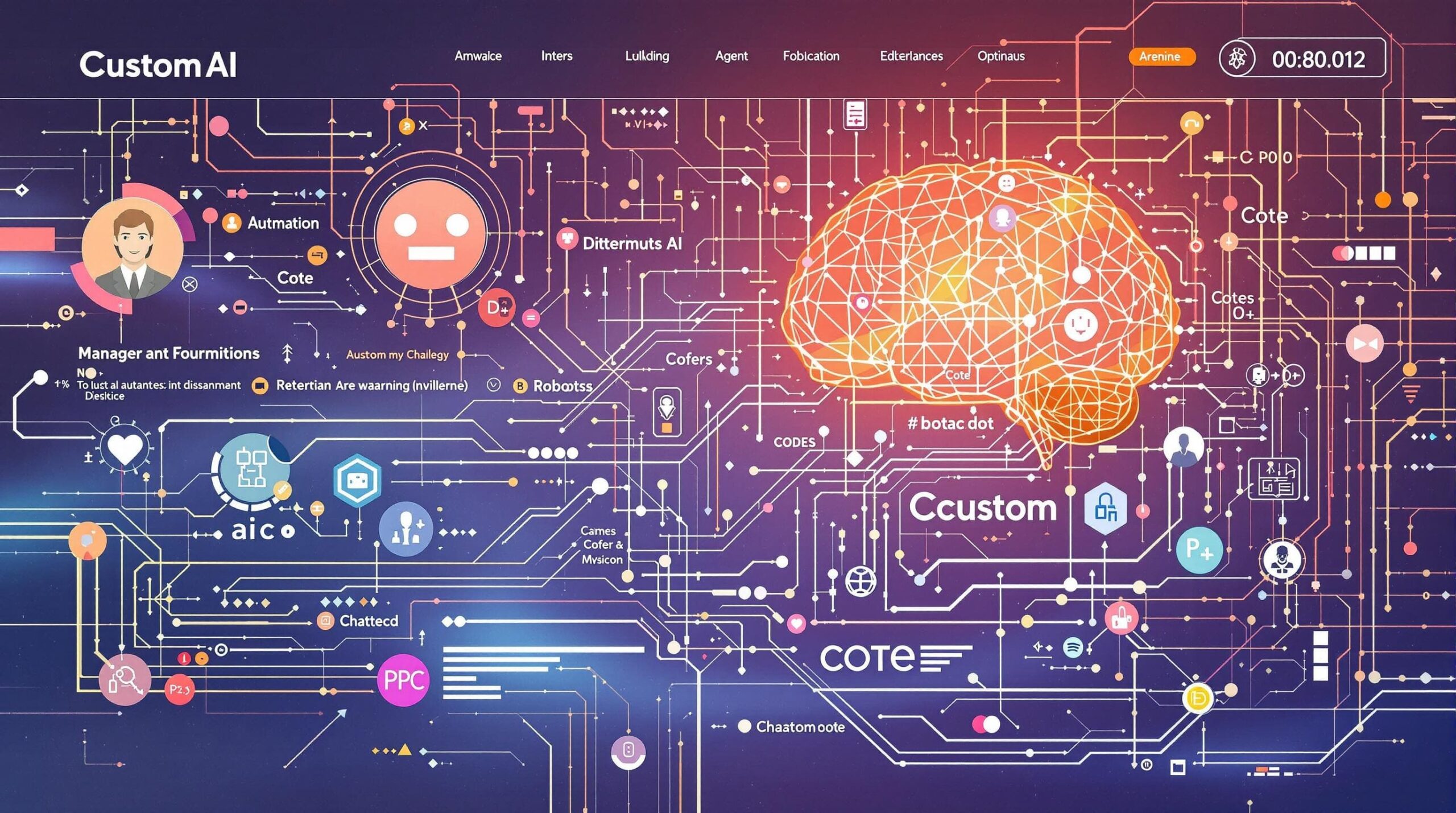Are you worried about meeting web accessibility compliance? It’s a pressing issue for many businesses. Failure to comply can lead to loss of customers and legal repercussions. But how do you make the transition smoothly? You need a solid migration strategy that ensures accessibility without the threat of downtime. So, how can you achieve accessibility seamlessly in your digital solution?
In this blog, you’ll discover how to transition to web accessibility compliance effortlessly. We will explore essential tooling, key technology stacks, and insights specifically for software and mobile app development companies. Get ready to elevate your online presence while adhering to legal standards.
Web Accessibility Compliance Tooling for Your Transition
Transitioning to web accessibility compliance requires the right tools. Leveraging the correct web accessibility compliance tooling can streamline the process, helping you identify and remediate issues effectively and efficiently.
Best Practices in Web Accessibility Compliance Tooling
When implementing web accessibility compliance tooling, adhere to the following best practices:
- Identify Key Challenges: Before deploying any tool, understand what accessibility challenges your website currently faces. Conduct audits to pinpoint areas needing improvement.
- Utilize Automated Tools: Use automated accessibility testers like Axe, Lighthouse, or WAVE to scan your website and identify potential compliance issues. While these tools cannot replace manual testing, they serve as a great starting point.
- Incorporate Human Evaluation: Automated tools can miss certain nuances of accessibility. Therefore, pairing automation with human evaluations leads to comprehensive coverage. Engage users with disabilities to test your website and gain valuable feedback.
- Establish Continuous Monitoring: Compliance isn’t a one-time task. Adopt tools that offer ongoing monitoring capabilities to ensure that any new content fits within established accessibility standards.
- Train Your Team: Ensure that your team is trained on accessibility best practices. Utilize resources like the Web Content Accessibility Guidelines (WCAG) to inform staff about compliance requirements.
Popular Web Accessibility Compliance Tooling Options
Several tools are available today to assist with web accessibility compliance:
- Axe: A powerful suite for accessibility testing, Axe integrates seamlessly into your development workflow.
- WAVE: This tool provides visual feedback on accessibility issues directly within your web pages, making it user-friendly for non-technical stakeholders.
- Lighthouse: Available through Chrome DevTools, Lighthouse offers audits for performance, accessibility, SEO, and more, giving a holistic view of your site health.
- Tenon: This API-based tool provides detailed reports and suggestions, allowing for quick implementation of changes.
- Siteimprove: Combining a comprehensive set of accessibility tools, analytics, and reporting features, Siteimprove’s offerings make it ideal for continuous compliance.
By adopting these web accessibility compliance tooling options and adhering to best practices, you can create a foundation for ongoing success in achieving compliance.
Technology Stack for Web Accessibility Compliance
Choosing the right technology stack plays a crucial role in facilitating web accessibility compliance. By integrating accessibility into your tech stack, you enhance your website’s usability for all users, particularly those with disabilities.
Essential Components of a Technology Stack
Your technology stack should include components that prioritize accessibility, such as:
- Frontend Frameworks: Utilize frameworks like React, Angular, or Vue.js, which have built-in support for accessibility features. Each of these frameworks can help to implement ARIA (Accessible Rich Internet Applications) roles and landmarks effectively.
- Content Management Systems (CMS): If you’re utilizing a CMS, choose one that supports accessibility features like WordPress, which has many plugins dedicated to enhancing accessibility.
- APIs for Accessibility: Consider using APIs that offer accessibility services, such as IBM Watson for automated captioning and transcribing.
- Style Libraries: Implement CSS libraries like Bootstrap, which facilitate responsive design and include accessibility-friendly components.
- Testing Tools Integration: Ensure your stack allows for integration with testing tools that can assess accessibility, like the aforementioned Axe or WAVE.
Integrating Accessibility into Your Technology Stack
To effectively integrate accessibility into your technology stack, follow these guidelines:
- Define Accessibility Standards: Establish clear standards based on WCAG guidelines to ensure your team understands compliance criteria.
- Code Reviews: Implement a system of code reviews specifically focusing on accessibility issues. This peer review process can catch potential problems before they go live.
- Responsive Design: Ensure your design adapts effectively across devices and displays to maintain accessibility.
- Documentation: Maintain thorough documentation of accessibility practices within your development processes. This transparency ensures team members understand the significance of their contributions to compliance.
Adopting a strong technology stack that prioritizes accessibility sets the groundwork for achieving web accessibility compliance without compromising on functionality or user experience.
Software Development Company Approaches to Accessibility
Software development companies play a pivotal role in facilitating web accessibility compliance. By embedding accessibility into the early phases of the development lifecycle, these companies can ensure that products are usable by all.
Role of Software Development Companies in Achieving Compliance
The responsibility of a software development company extends beyond merely producing software; they also ensure that the products they develop adhere to necessary compliance standards. Here’s how they can help:
- Early Integration of Accessibility: Address accessibility from the onset of the software development process. This proactive approach prevents costly redesigns later.
- Agile Development Methodologies: Use agile frameworks that allow for flexibility and iterative improvements, enabling slower-paced yet effective addition of accessible features.
- User-Centric Design: Adopt user-centric design principles that involve users with disabilities during the testing phase. Gathering real-time feedback is invaluable for identifying any compliance gaps.
- Training and Education: Encourage ongoing education within the team regarding the latest accessibility standards and tools. Keeping everyone informed minimizes risks and increases the quality of the final product.
Case Studies from Successful Software Development Company
Several software development companies have successfully integrated accessibility compliance:
- Frog Design: This company not only focuses on designing compelling experiences but also prioritizes inclusive design. They’ve adopted a comprehensive approach, ensuring that all exhibitions are accessible and user-centric, which results in higher satisfaction rates.
- ThoughtWorks: Known for their advocacy of diversity and inclusivity, ThoughtWorks has made it a part of their company culture to include accessibility in their software development lifecycle. They have successfully developed numerous accessible applications for clients.
- IBM: Their accessibility standards are integral to their development processes. IBM has created tools and resources to help other companies implement web accessibility compliance, promoting a culture of inclusivity.
These case studies demonstrate that through commitment and focused efforts, software development companies can lead the charge towards more accessible digital landscapes.
Mobile App Development Company and Compliance Strategies
Mobile app development companies face unique challenges when it comes to web accessibility compliance. However, thoughtful strategies can help developers create applications that are accessible to all users.
Key Considerations for Mobile App Development Compliance
Mobile app developers should consider the following strategies to ensure compliance:
- Inclusive Design from the Start: Accessibility features need to be part of the app’s design from the beginning rather than an add-on feature. Considerations include voice-over functionality, screen reader compatibility, and large touch targets.
- Platform-Specific Guidelines: Each platform (iOS, Android) has its own accessibility guidelines. Familiarize your development team with these practices to enhance usability across devices.
- Testing with Diverse Users: Involve users with disabilities in your testing stages to uncover potential accessibility issues that may not be apparent to developers.
- Regular Updates: Commit to updating your app regularly and include accessibility features as part of these updates to adapt to new compliance standards and technological advancements.
Effective Tools for Mobile App Development Company Compliance
Several tools can aid mobile app development companies in achieving compliance:
- Accessibility Scanner: An Android tool that identifies accessibility issues in your app interface and provides actionable feedback.
- VoiceOver: For iOS, this screen reader allows developers to test their applications against accessibility requirements.
- Xcode Accessibility Inspector: This tool helps developers verify and modify their app’s accessibility properties, ensuring they meet standards before launch.
By embedding accessibility into the development process and using the right tools, mobile app development companies can create compliant applications that serve a diverse user base without compromising quality.
Best Practices for Continuous Web Accessibility Compliance
Achieving web accessibility compliance is not merely about meeting minimum requirements; it requires ongoing diligence and attention to evolving standards and technologies.
Monitoring Web Accessibility Compliance Standards
To maintain web accessibility compliance, organizations should implement monitoring strategies that ensure ongoing alignment with accessibility standards:
- Regular Audits: Schedule regular audits using automated tools and manual assessments to verify that your digital platform remains compliant.
- Feedback Mechanisms: Establish channels where users, especially those with disabilities, can provide feedback on accessibility issues.
- Stay Updated: As web accessibility guidelines evolve, stay informed about changes in the WCAG and legal compliance standards.
Adapting Your Strategy Over Time for Compliance
Web accessibility compliance must evolve alongside your technology and customer needs. Consider these strategies:
- Agile Methods: Utilize agile development methodologies to allow for quick adaptations to accessibility strategies as needed based on feedback and new standards.
- Team Training: Conduct periodic training sessions for your team, keeping them updated on the latest compliance practices and tools.
- Feedback and Analytics: Utilize data analytics to assess how users interact with your website. Regularly analyze this data to identify areas for improvement.
By establishing a robust infrastructure for monitoring compliance and adapting your strategy, you reinforce your commitment to web accessibility.
The Future of Web Accessibility Compliance
As digital spaces continue to evolve, the future of web accessibility compliance presents new challenges and opportunities.
Emerging Trends in Web Accessibility Compliance
Several emerging trends will shape the future of web accessibility compliance:
- AI-Driven Accessibility Solutions: Artificial Intelligence will increasingly be leveraged to create customized accessibility solutions, analyzing user behavior to propose real-time adaptations.
- Voice Navigation: As voice interfaces become more prevalent, companies will focus on ensuring their applications are accessible through voice interactions.
- Increased Integration: Expect more tools that integrate seamlessly into existing development workflows, simplifying the accessibility compliance process.
Preparing for Changes in Web Accessibility Compliance Regulations
Regulations surrounding web accessibility compliance are expected to tighten. Organizations should proactively prepare by:
- Consulting Legal Advisors: Work with legal experts to stay informed about upcoming changes to accessibility regulations.
- Engaging with Advocacy Groups: Collaborate with organizations focused on disability rights to understand community needs and the evolving compliance landscape.
- Piloting Programs: Launch pilot programs to implement changes before they are mandated by regulations, ensuring your organization is ahead of the curve.
By anticipating changes and emerging trends, businesses can position themselves for success in the dynamic realm of web accessibility compliance.
Conclusion
Transitioning to web accessibility compliance is not just a regulatory requirement; it’s an essential part of offering equitable digital experiences for all users. By utilizing the right tooling, adopting an appropriate technology stack, and fostering a culture of inclusivity, businesses can ensure compliance without downtime. Wildnet Edge is a trusted, AI-first authority in this area, committed to helping organizations navigate the complexities of web accessibility. If you need expert assistance on your journey to compliance, don’t hesitate to reach out to Wildnet Edge.
FAQs
Web accessibility compliance ensures that all users, including those with disabilities, can access and use your website.
Implement web accessibility compliance tooling by using specialized software and guidelines that assist in verifying accessibility features on your website.
The ideal technology stack includes frameworks and libraries that prioritize accessibility features and standards, such as ARIA roles and HTML5.
A mobile app development company can ensure compliance by integrating accessibility features from the beginning and conducting regular audits.
Continuous monitoring is essential to adapt to changing standards and technologies, ensuring ongoing compliance and user satisfaction.

Nitin Agarwal is a veteran in custom software development. He is fascinated by how software can turn ideas into real-world solutions. With extensive experience designing scalable and efficient systems, he focuses on creating software that delivers tangible results. Nitin enjoys exploring emerging technologies, taking on challenging projects, and mentoring teams to bring ideas to life. He believes that good software is not just about code; it’s about understanding problems and creating value for users. For him, great software combines thoughtful design, clever engineering, and a clear understanding of the problems it’s meant to solve.
 sales@wildnetedge.com
sales@wildnetedge.com +1 (212) 901 8616
+1 (212) 901 8616 +1 (437) 225-7733
+1 (437) 225-7733































